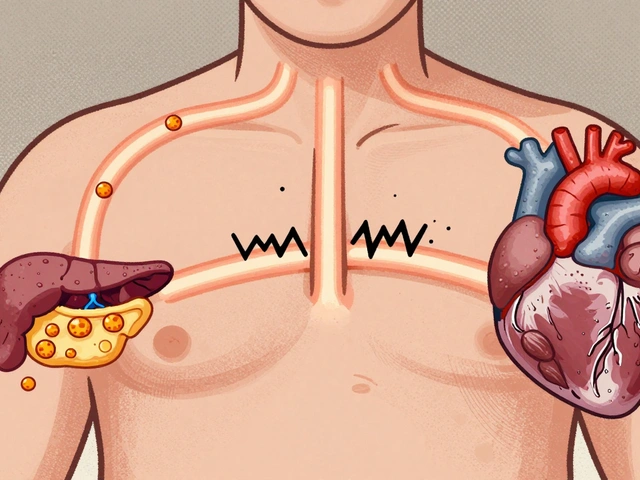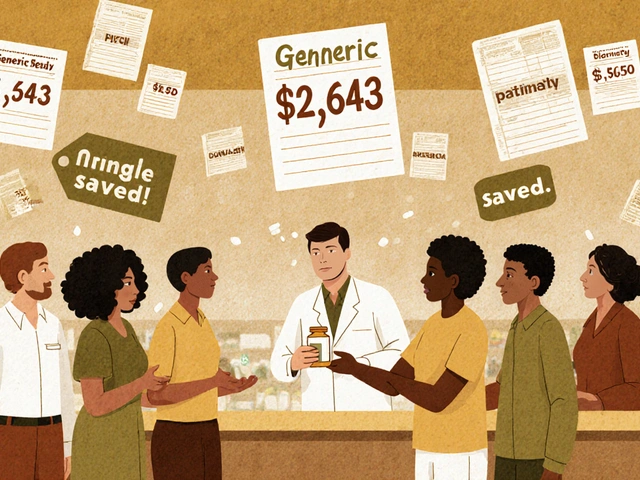Side Effects in Elderly: What You Need to Know About Medications and Aging
When it comes to side effects in elderly, how older adults react to medications differently than younger people due to changes in metabolism, kidney function, and body composition. Also known as age-related drug sensitivity, this isn’t just about taking more pills—it’s about how the body’s ability to process them slows down, making even common drugs risky. A 70-year-old taking the same dose of a blood pressure pill as a 40-year-old isn’t getting the same result. Their liver and kidneys don’t clear drugs as fast, fat tissue holds onto some medications longer, and brain chemistry becomes more sensitive to sedatives and anticholinergics. That’s why a drug that causes mild drowsiness in a young adult can send an older person into a fall, confusion, or even hospitalization.
This is where polypharmacy, the use of five or more medications at once, which is common among seniors managing multiple chronic conditions. Also known as drug burden, it doesn’t just add up—it multiplies risks. Take a senior on warfarin for blood clots, adding a new antibiotic for a UTI, and a painkiller for arthritis. Each one changes how the others work. Studies show over 40% of older adults on five or more drugs experience at least one avoidable side effect each year. And it’s not just prescriptions—herbal teas, supplements, and over-the-counter sleep aids can sneak in and cause dangerous interactions. One man taking St. John’s Wort for low mood ended up with a dangerous spike in blood pressure because it clashed with his heart medication. He didn’t know it was a problem until he collapsed. Then there’s medication safety in seniors, the practice of choosing, dosing, and monitoring drugs in older adults to reduce harm while still treating illness. Also known as geriatric prescribing, it’s not about cutting drugs—it’s about smart choices. A doctor might swap a long-acting benzodiazepine for a short-term alternative, or replace an NSAID with acetaminophen to avoid stomach bleeds. It’s also about checking for symptoms that look like aging but are actually drug reactions: memory lapses, fatigue, dizziness, or constipation. And it’s not just the drugs themselves—it’s how they’re taken. Forgetting doses, mixing pills in the same container, or taking them with grapefruit juice (which messes with liver enzymes) all add up.
The posts below aren’t just lists of side effects—they’re real stories and science-backed strategies from people who’ve been there. You’ll find how metformin can drain energy in older diabetics, why nitrofurantoin might affect thyroid function in seniors, and how mixing sedatives can be deadly. You’ll see how herbal teas quietly interfere with blood thinners, how antibiotics like chloramphenicol carry hidden risks for older kidneys, and why even common painkillers can trigger dangerous bleeding when paired with steroids. These aren’t theoretical warnings. They’re patterns seen in clinics, ERs, and homes across the country. What you’ll learn here isn’t about fear—it’s about control. Knowing what to watch for, what to ask your doctor, and how to spot the red flags before it’s too late.

- Nov 12, 2025
- Posted by Cillian Osterfield
How Age Affects Medication Side Effects and Tolerability
Aging changes how your body handles medications, making side effects more common and severe. Learn why older adults need lower doses, which drugs are riskiest, and how to prevent dangerous reactions.
Categories
- Health and Wellness (57)
- Medications (39)
- Health and Medicine (22)
- Pharmacy Services (10)
- Mental Health (5)
- Health and Career (2)
- Medical Research (2)
- Business and Finance (2)
- Health Information (1)
Latest Posts

Buy Generic Abilify Online Safely (NZ 2025): Cheap Aripiprazole Prices, Rules, and Red Flags
- 22 Aug, 2025

Obesity Comorbidities: How Diabetes, Heart Disease, and Sleep Apnea Connect and What to Do About It
- 1 Dec, 2025
©2025 heydoctor.su. All rights reserved



